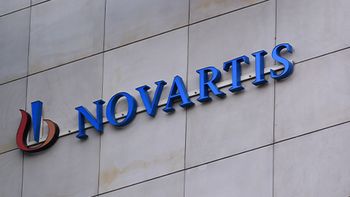
The Rising Clout of the Patient
In 2011, the patient’s clout as a stakeholder was firmly established, as reflected in several industry conferences. What’s next for the patient in 2012?
In 2011, the patient’s clout as a stakeholder was firmly established, as reflected in several industry conferences. What’s next for the patient in 2012?
In 2011, many healthcare organizations came around to the idea that patients should be included in discussions that had customarily taken place about them, but without their direct participation. This shift was evident at several healthcare conferences last year, and bodes well for 2012 as a year when further overtures – and partnerships – will be formed with and between patients.
Health2.0
The Health2.0 conference in San Francisco brought a deluge of innovation and shiny, new healthcare applications. Data plus IT and innovation represent the future of healthcare, and individual patients are a critical component of this equation (not just their data). This was a key theme of the Health2.0 conference. “Patient stories” have often been highlighted at conferences, and used as bookends to infuse a dose of reality to educational sessions. What impressed me about the Health2.0 conference was the inclusion of patients and caregivers in the conversations, allowing for bi-directional exchange. Patients2.0, an offshoot of Health2.0, is a movement that aims to revolutionize healthcare delivery around the patients. The goal is to leverage the Health2.0 phenomenon and develop a hub for patients to exchange experiences through peer-to-peer networks, to obtain information, and most importantly, to have a collective voice in healthcare decision-making. By sharing stories, co-creating health data, and aggregating issues across the healthcare spectrum, the voices of Patients2.0 are empowered to be part of the larger conversation, and to exert influence on the health system by shaping future policy. Patients are the new healthcare disruption that can help transform the landscape, and using forums such as Health2.0 to involve them every step of the way is truly ahead of the curve.
Epatient Connections
The key theme at the Epatient Connections, held in Philadelphia, was that “Healthcare is Social.” Physician, medical and patient communities are forming connections through various social media channels, but there are a still a few less progressive entities a step behind as they figure out how to navigate uncharted regulatory waters. As connections are made, patients are becoming further engaged in their care as they learn from what others are doing. The key is to take those connections one-step further and bridge the various pockets of connection. There needs to be further inter-connectivity between patient voices, scientific publications, medical results and records, and medical education geared towards healthcare professionals, and these need to set the stage for a longitudinal data set. Patient engagement tools that were showcased included everything from health management tools to game-ification that integrated feedback mechanisms and incentives to an Internet enabled robotic telepresence, allowing immobile patients to interact with their healthcare community.
SXSH Unconference
The SXSH Unconference also took place in Philadelphia (Sharing, Exchanging, Social Health). Todd Park, CTO, US Department of Health & Human Services opened up the conference with an introduction to the Data Liberation initiative: New Incentives+ Information Liberation= Rocket Fuel for Innovation. Medicare, Medicaid, and the Veteran’s Administration represent the largest repository of public health data in the world. Patient data liquidity and information about the public health, stripped of personal identification, is being made available so that innovators can use it to create health-maximizing options.
2012
2011 was a year where a foundation for the “patient voice” was established as a critical component of the healthcare system. 2012 will be an even more important year, as healthcare organizations empower more patients by personalizing communications for individual patients. Patients are often overwhelmed with the amount of information they must retain to successfully manage their health. How will healthcare organizations come together to simplify navigation of the healthcare system? How will different healthcare systems, records and applications that serve different purposes connect with one another to prevent redundancy? How will patient stories be further synthesized and culminated into “patient issues” that a roundtable of healthcare sectors can further troubleshoot at future conferences? If 2011 was the year of dipping toes in the waters of “patient engagement” …2012 should be the year of swimming alongside others towards a unified goal-a year of patient engagement through an open network of inter-connectivity.
Sarah Krüg is CEO/executive director of CANCER101, a patient outreach and advocacy organization. She is also president-elect of The Society for Participatory Medicine.
Newsletter
Lead with insight with the Pharmaceutical Executive newsletter, featuring strategic analysis, leadership trends, and market intelligence for biopharma decision-makers.




